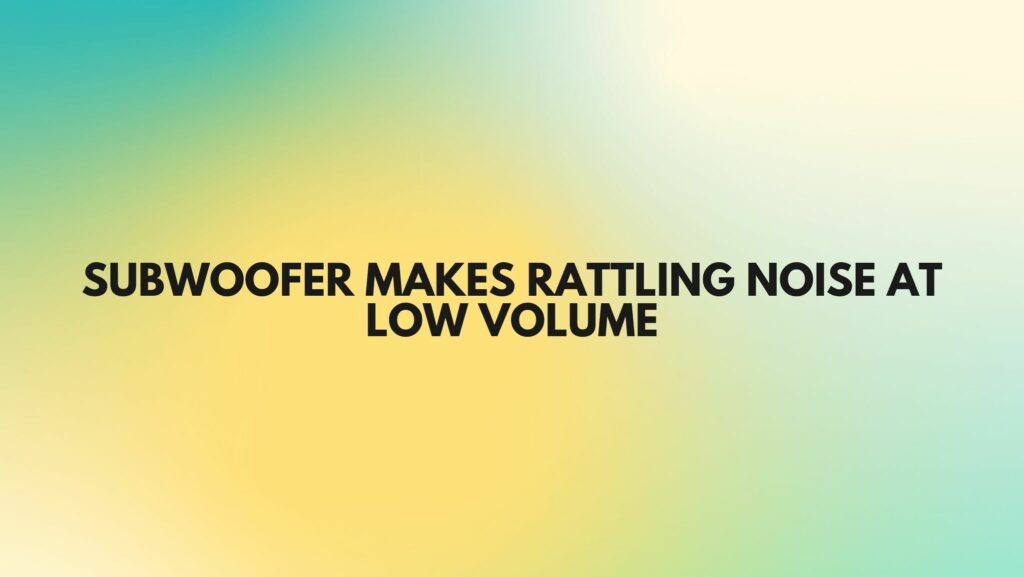A subwoofer is an essential component of any high-quality audio system, designed to deliver deep bass and enhance your audio experience. However, if your subwoofer starts making a rattling noise, especially at low volume levels, it can be a frustrating and unpleasant experience. This article aims to explore the various reasons why your subwoofer might be making a rattling noise at low volume and provide potential solutions to address the issue.
- Speaker Damage
One of the most common causes of a rattling noise in a subwoofer is speaker damage. Over time, the subwoofer’s cone or surround may become worn or torn, leading to unwanted vibrations and rattling sounds. Even at low volumes, these issues can be noticeable.
Solution: If the speaker is damaged, you may need to replace it or have it repaired by a professional. Be sure to use high-quality replacement parts and follow manufacturer recommendations.
- Loose or Damaged Components
Your subwoofer contains various components that can become loose or damaged, such as screws, bolts, or internal wires. Loose parts can produce rattling noises as they vibrate against each other or the subwoofer’s enclosure.
Solution: Carefully inspect your subwoofer for loose or damaged components. If you find any, tighten or replace them as necessary. If you’re uncertain about how to do this, consult the subwoofer’s manual or seek professional assistance.
- Enclosure Issues
The subwoofer enclosure, or box, is a critical component that can affect sound quality. If the enclosure is not properly sealed or is damaged, it can lead to rattling noises, especially at low volumes.
Solution: Check the enclosure for any visible damage or openings. Make sure that it is properly sealed and free from leaks. Repair or replace the enclosure if necessary.
- Overloading the Subwoofer
Sometimes, a subwoofer can rattle because it is pushed beyond its limits. When you play audio at volumes that exceed the subwoofer’s capabilities, it can distort the sound and produce rattling noises.
Solution: Adjust the subwoofer’s settings to match the volume and power capabilities of your audio source. If needed, consider upgrading to a more powerful subwoofer to handle higher volumes without distortion.
- Amplifier Settings
Incorrect amplifier settings can cause your subwoofer to rattle, particularly at low volumes. If your amplifier’s gain, frequency, or other settings are not properly configured, it can result in unwanted vibrations.
Solution: Carefully review your amplifier’s settings and ensure they are appropriate for your subwoofer and audio source. Consult your amplifier’s manual or seek professional advice if needed.
- Poor Audio Source Quality
Sometimes, the problem may not be with the subwoofer itself, but with the quality of the audio source. Low-quality audio files or recordings may contain distortions that cause rattling noises, especially at low volumes.
Solution: Use high-quality audio sources and files to minimize distortions. Consider upgrading your audio equipment or using audio enhancement software to improve the quality of your sound source.
Conclusion
A subwoofer making a rattling noise at low volume can be frustrating, but with careful diagnosis and the appropriate solutions, you can often resolve the issue. Whether it’s a damaged speaker, loose components, enclosure problems, or incorrect settings, addressing the root cause of the problem can help restore your subwoofer’s performance and enhance your audio experience. Remember to consult the manufacturer’s recommendations and seek professional assistance when necessary to ensure the best results and prevent further damage to your subwoofer.


